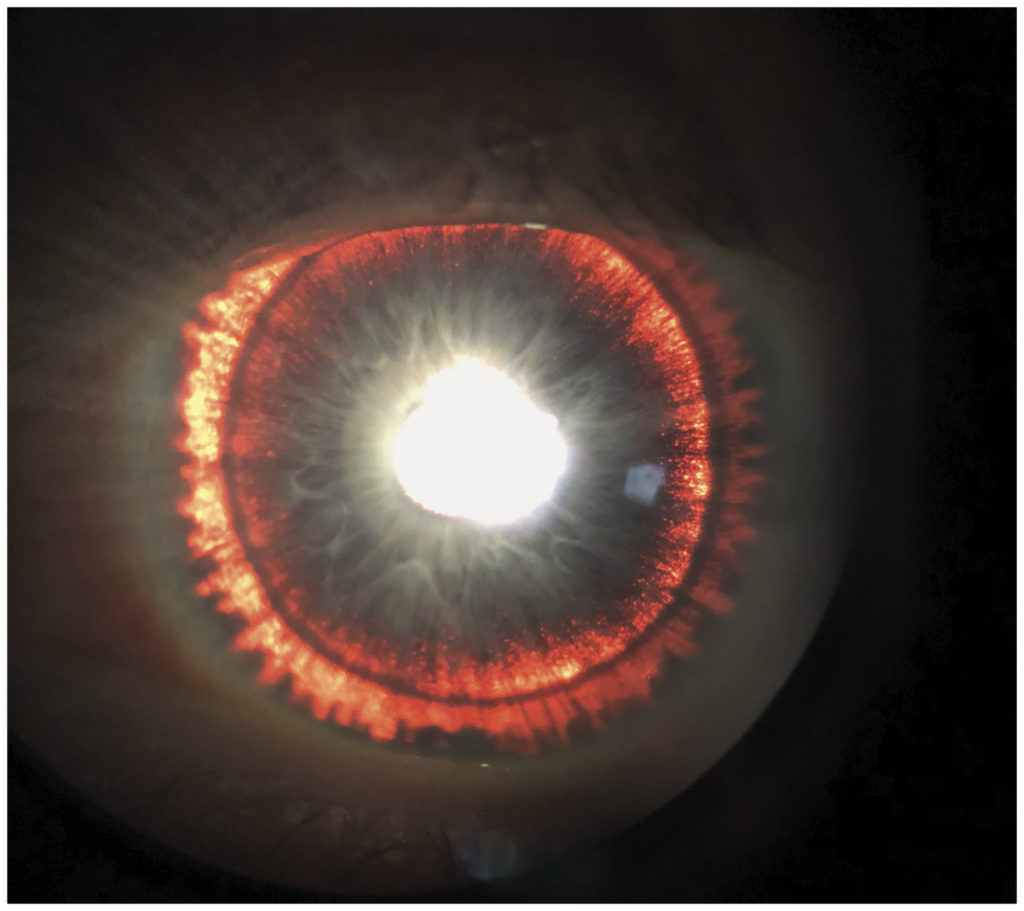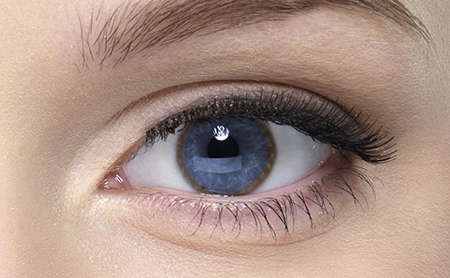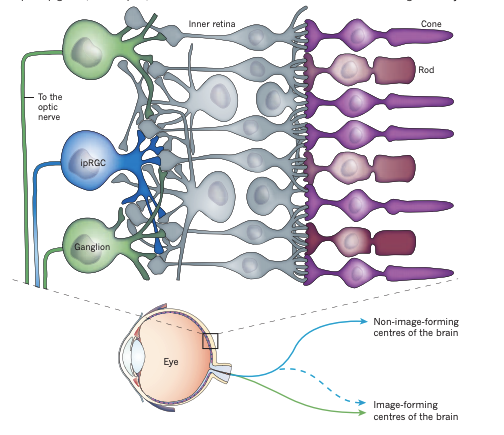Real Life Fantasy: The Eyes Have It
Fans have sent us a couple of awesome pics of eyes recently. Granted, one is a gnarly eye disorder and the other is a symptom of a liver disorder, but they’re at least cool to… uh, see.
First (and most spectacularly) we have pigment dispersion syndrome–also known as going red wight! I’m resisting the urge to find out if this guy’s name is Andross:

Next up are Kayser-Fleischer rings:

A fan (who is also a medical student) sent us an email about it, saying, “In some types of liver disease, the body absorbs too much copper and can start depositing it into tissues. One susceptible tissue is the Descemet’s membrane, which is part of the cornea between the iris and sclera. It results in a discoloration near the iris that forms a ring, kinda like this:”

We also have a slightly more optimistic bit of news about mammalian vision to share with you: turns out we have three photoreceptors in our eyes, not two (rods and cones)!

Granted, the research surrounding this particular revelation started in 2002, and the Nature article is from 2011, but still. From the article:
“Foster and his collaborators had done nothing to treat the woman’s blindness. Instead, her awareness of light owed itself to a class of light-sensitive cells discovered in 2002. Studies of these intrinsically photosensitive retinal ganglion cells (ipRGCs) have since revealed many surprises. Scientists initially thought that, rather than contribute to vision, the cells simply synchronized the circadian clock, which sets the body’s 24-hour patterns of metabolism and behaviour, with changing light levels. However, recent work suggests that ipRGCs have been underestimated. They may also have a role in vision — distinguishing patterns or tracking overall brightness levels — and they seem to enable ambient light to influence cognitive processes such as learning and memory.”
And, in case the title of this post sounds familiar to you, it’s thanks to Uncle Philip. Until next time, friends!
